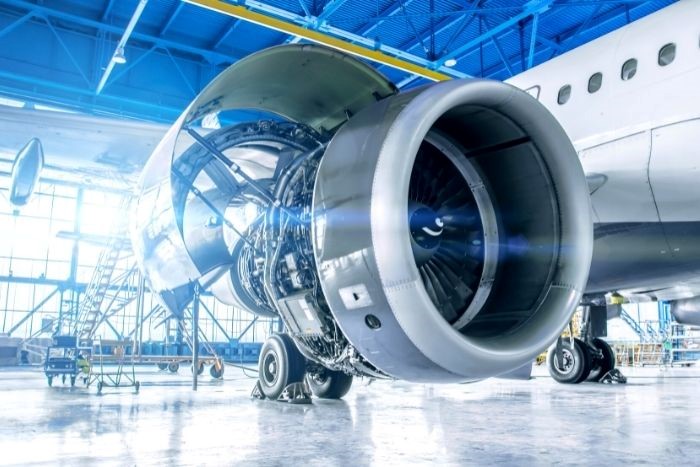In the ever-evolving world of aviation, the need for reliable and efficient avionics systems cannot be overstated. The certification process for avionics ensures that these systems meet rigorous standards for safety and performance. It is a complex journey that involves multiple stages and compliance with international regulations. Understanding this process is crucial for those involved in the aviation industry, including manufacturers, suppliers, and engineers.
This article aims to provide a comprehensive overview of the certification process for avionics. We will explore the key stages, regulatory requirements, involved stakeholders, and the impact of technological advancements on this essential process.

What is Avionics Certification?
Avionics certification is the process through which avionics systems are approved for use in aircraft. These systems range from communication devices to navigation guidance equipment, all vital for the safe operation of an aircraft. Certification involves validating that these systems adhere to specified safety standards and can operate reliably under different conditions.
The Importance of Avionics Certification
The certification process for avionics is pivotal in ensuring safety in air travel. Aviation authorities across the globe, such as the Federal Aviation Administration (FAA) in the United States and the European Union Aviation Safety Agency (EASA) in Europe, set stringent standards that must be met before any avionics system can be installed or used on an aircraft.
These standards are in place to mitigate risks associated with avionics equipment failures, which can lead to catastrophic outcomes. Therefore, obtaining certification is a decisive step in maintaining the safety and security of passengers and aircraft.
Stages of the Certification Process
Initial Design and Development
The first stage in the certification process for avionics begins with the initial design and development of the avionics systems. Engineers and designers must collaborate to ensure that the system will function as required and meet safety standards.
Testing and Evaluation
Once the design is finalized, comprehensive testing and evaluation are conducted. This step involves both laboratory testing and real-world scenario assessments to ensure the avionics system performs accurately and safely.
Regulatory Review
The regulatory review phase is one of the most critical stages in the certification process for avionics. In this phase, the system is thoroughly examined by aviation authorities to confirm compliance with international standards and regulations.
Final Certification
After successfully passing the regulatory review, the avionics system is granted certification. This certification is a testament to the system’s reliability and compliance with safety standards. Only then can it be marketed for use in aircraft.
Major Regulatory Bodies
Several regulatory bodies oversee the certification process for avionics across different regions. Among them are:
- Federal Aviation Administration (FAA)
- European Union Aviation Safety Agency (EASA)
- Transport Canada Civil Aviation (TCCA)
Each of these organizations has its specific guidelines and regulations, but they often work collaboratively to promote global aviation safety standards.
Global Standards in Avionics Certification
The certification of avionics systems is bound by international standards such as RTCA DO-178C for software considerations and RTCA DO-254 for hardware considerations. These standards set the foundation for ensuring that avionics systems are safe, reliable, and consistent across different aircraft and jurisdictions.
The Role of Technological Advancements
As technology advances, the certification process for avionics continues to evolve. The integration of artificial intelligence, machine learning, and advanced data analytics in avionics systems has added new dimensions to the certification procedures.
Innovations in these areas challenge traditional regulatory frameworks, necessitating updates to certification processes to address the unique characteristics of emerging technologies.
Impact of Modern Technologies
Modern technologies have not only transformed avionics systems but also influenced their certification. Automated systems now frequently assist in testing and evaluation, facilitating a more efficient certification process.
The Future of Avionics Certification
The future of the certification process for avionics promises to be dynamic, adapting to new technologies and methods of ensuring safety. Researchers and engineers are continually working towards more advanced systems that offer higher safety and efficiency levels.
Future regulations and standards will likely focus on the integration of autonomous systems and the increased use of artificial intelligence, shaping the next era of avionics certification.
Trends in Avionics
Some trends to watch in the certification process for avionics include:
- Greater emphasis on cybersecurity in avionics systems.
- Adaptation to electrical and hybrid propulsion systems.
- Development of remote certification procedures to streamline processes.
Challenges Faced in Certification
The certification process for avionics is not without its challenges. Navigating the complexities of regulatory compliance, addressing technological gaps, and managing time constraints are major hurdles faced by stakeholders.
Solutions and Strategies
To overcome these challenges, organizations are adopting strategies such as enhancing research collaborations, leveraging digital tools for compliance checking, and investing in talent development.

Frequently Asked Questions
What is the purpose of avionics certification?
The purpose of avionics certification is to ensure that avionics systems meet safety and reliability standards, reducing risks during air travel.
Which authorities are responsible for avionics certification?
Major authorities involved are the Federal Aviation Administration (FAA), European Union Aviation Safety Agency (EASA), and Transport Canada Civil Aviation (TCCA).
How has technology affected the certification process?
Technological advancements have led to updates in certification procedures to accommodate new systems, ensuring they meet safety standards through efficient testing methods.
For more insights on aerospace technologies, visit navigating the skies. Additionally, check out aerospace electronics and in-flight entertainment articles that delve deeper into aviation topics.


